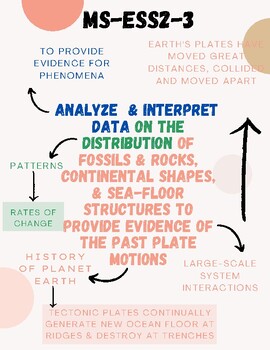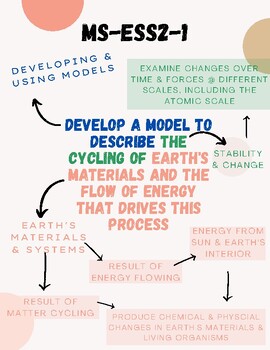Louisiana 8th Grade Science Standard Breakdown
Julie Malone
11 Followers
Grade Levels
8th
Subjects
Standards
NGSSMS-LS1-5
NGSSMS-ESS1-4
NGSSMS-ESS2-3
NGSSMS-ESS3-2
NGSSMS-ESS3-1
Formats Included
- PDF
Pages
19 pages
Julie Malone
11 Followers
Description
This document include the following NGSS Standards: MS-ESS2-2, MS-ESS2-3, MS-ESS1-4, MS-ESS2-1, MS-ESS3-1, MS-ESS3-2, MS-ESS3-3, MS-PS1-3, MS-PS1-1, MS-PS1-6, MS-PS3-3, MS-PS3-5, MS-LS1-4, MS-LS1-5, MS-LS3-1, MS-LS4-1, MS-LS4-2, MS-LS4-3, MS-LS4-6. These are made into similar poster formats that are user friendly and ready to print for your personal use or to print and hang in your classroom for students. Each standard is broken down by color: Blue-Science and Engineering Practices, Orange: Disciplinary Core Ideas, Green- Crosscutting Concepts.
Total Pages
19 pages
Answer Key
N/A
Teaching Duration
N/A
Report this resource to TPT
Reported resources will be reviewed by our team. Report this resource to let us know if this resource violates TPT’s content guidelines.
Standards
to see state-specific standards (only available in the US).
NGSSMS-LS1-5
Construct a scientific explanation based on evidence for how environmental and genetic factors influence the growth of organisms. Examples of local environmental conditions could include availability of food, light, space, and water. Examples of genetic factors could include large breed cattle and species of grass affecting growth of organisms. Examples of evidence could include drought decreasing plant growth, fertilizer increasing plant growth, different varieties of plant seeds growing at different rates in different conditions, and fish growing larger in large ponds than they do in small ponds. Assessment does not include genetic mechanisms, gene regulation, or biochemical processes.
NGSSMS-ESS1-4
Construct a scientific explanation based on evidence from rock strata for how the geologic time scale is used to organize Earth’s 4.6-billion-year-old history. Emphasis is on how analyses of rock formations and the fossils they contain are used to establish relative ages of major events in Earth’s history. Examples of Earth’s major events could range from being very recent (such as the last Ice Age or the earliest fossils of homo sapiens) to very old (such as the formation of Earth or the earliest evidence of life). Examples can include the formation of mountain chains and ocean basins, the evolution or extinction of particular living organisms, or significant volcanic eruptions. Assessment does not include recalling the names of specific periods or epochs and events within them.
NGSSMS-ESS2-3
Analyze and interpret data on the distribution of fossils and rocks, continental shapes, and seafloor structures to provide evidence of the past plate motions. Examples of data include similarities of rock and fossil types on different continents, the shapes of the continents (including continental shelves), and the locations of ocean structures (such as ridges, fracture zones, and trenches). Paleomagnetic anomalies in oceanic and continental crust are not assessed.
NGSSMS-ESS3-2
Analyze and interpret data on natural hazards to forecast future catastrophic events and inform the development of technologies to mitigate their effects. Emphasis is on how some natural hazards, such as volcanic eruptions and severe weather, are preceded by phenomena that allow for reliable predictions, but others, such as earthquakes, occur suddenly and with no notice, and thus are not yet predictable. Examples of natural hazards can be taken from interior processes (such as earthquakes and volcanic eruptions), surface processes (such as mass wasting and tsunamis), or severe weather events (such as hurricanes, tornadoes, and floods). Examples of data can include the locations, magnitudes, and frequencies of the natural hazards. Examples of technologies can be global (such as satellite systems to monitor hurricanes or forest fires) or local (such as building basements in tornado-prone regions or reservoirs to mitigate droughts).
NGSSMS-ESS3-1
Construct a scientific explanation based on evidence for how the uneven distributions of Earth’s mineral, energy, and groundwater resources are the result of past and current geoscience processes. Emphasis is on how these resources are limited and typically non-renewable, and how their distributions are significantly changing as a result of removal by humans. Examples of uneven distributions of resources as a result of past processes include but are not limited to petroleum (locations of the burial of organic marine sediments and subsequent geologic traps), metal ores (locations of past volcanic and hydrothermal activity associated with subduction zones), and soil (locations of active weathering and/or deposition of rock).





